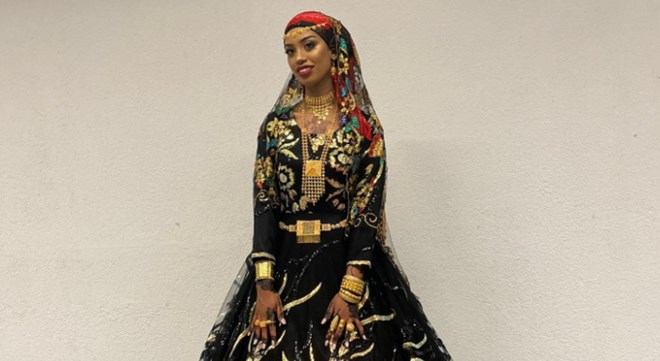British Muslim
Tuesday October 5, 2021

“Getting married during COVID-19 is no longer an easy task. But a Somali-Yemeni couple in Switzerland mustered the courage to organise a memorable traditional yet contemporary fiesta in the heart of Switzerland”
Being a cultural explorer, attending a Somali-Yemeni wedding was not only a new and exciting experience for me, but also one where I experienced an interesting fusion of cultures.
I was invited to the wedding of Adil and Miski which took place in both Zurich and Basel. Travelling during the pandemic in a time when social distancing measures were eased made me feel excited yet edgy all at the same time.
Typically, Somali-Yemeni weddings are an arranged affair that tend to empower tribal and communal relationship as both parties tend to have huge extended families. A Somali wedding (also known as aroos) can be defined as a celebration that traditionally includes three days of activities consisting of dancing, meals, music, and gift-giving.
Upon completion of the Nikah (marriage ceremony) of Adil and Miski, the family of Miski hosted a ladies-only event in Zurich. This is where I witnessed Miski change into four dazzling and beautifully designed outfits, starting from the traditional Somali bridal outfit known as a Guintiino; a full-length and vibrant coloured dress.
What’s more, all this took place whilst she was accompanied by her groom. The bridesmaid helped enhance the experience with their significant roles by singing traditional songs of praise, beauty, and upcoming married life. Women tend to celebrate this event more than the actual white wedding day because they have an opportunity to express their joy in seeing the bride for the first time. It is perhaps the first time the groom and bride’s extended family are officially introduced. No expense is spared in ensuring the bride is adorned in the best jewellery, accessory, henna designs, and attention-grabbing headpieces.
Prior to the white wedding event, I observed how closely the family members were actively involved in organising the event. Paying attention to the interior décor, lighting, and wedding menu, their hard work paid off as the final presentation was stunning. The Somali cuisine served at the wedding featured a menu of rice, meat and vegetables, which was mouth-wateringly delicious.
I was surprised to learn that some of the guests had specially flown in from Holland and other cities in Switzerland, symbolizing how important a wedding in the family is. After the majestic and grand entrance by both bride and groom accompanied by their bridesmaids, a DJ started casting his magic by playing an eclectic collection of contemporary and traditional Somali and Arabic music. A fusion of music which displayed a balance of modernity and tradition.
In that very moment, I thought about the uniqueness of the Somali and Yemeni culture. But most importantly, I thought about how music and dancing both act as powerful mediums in bringing the family and tribe members together for an unforgettable experience.